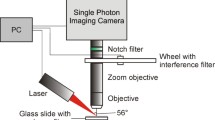Abstract.
The ablation characteristics of various polymers were studied at low and high fluences for an irradiation wavelength of 308 nm. The polymers can be divided into three groups, i.e. polymers containing triazene groups, designed ester groups, and reference polymers, such as polyimide. The polymers containing the photochemically most active group (triazene) exhibit the lowest thresholds of ablation (as low as 25 mJ cm-2) and the highest etch rates (e.g. 250 nm/pulse at 100 mJ cm-2), followed by the designed polyesters and then polyimide. Neither the linear nor the effective absorption coefficients have a clear influence on the ablation characteristics. The different behavior of polyimide might be explained by a pronounced thermal part in the ablation mechanism. The laser-induced decomposition of the designed polymers was studied by nanosecond interferometry and shadowgraphy. The etching of the triazene polymer starts and ends with the laser pulse, indicating photochemical ablation. Shadowgraphy reveals mainly gaseous products and a pronounced shockwave in air. The designed polymers were tested for an application as the polymer fuel in laser plasma thrusters.
Similar content being viewed by others
Author information
Authors and Affiliations
Additional information
Received: 21 October 2002 / Accepted: 20 January 2003 / Published online: 28 May 2003
RID="*"
ID="*"Corresponding author. Fax: +41-56/3104-412, E-mail: thomas.lippert@psi.ch
Rights and permissions
About this article
Cite this article
Lippert, T., Hauer, M., Phipps, C. et al. Fundamentals and applications of polymers designed for laser ablation . Appl Phys A 77, 259–264 (2003). https://doi.org/10.1007/s00339-003-2111-y
Issue Date:
DOI: https://doi.org/10.1007/s00339-003-2111-y



